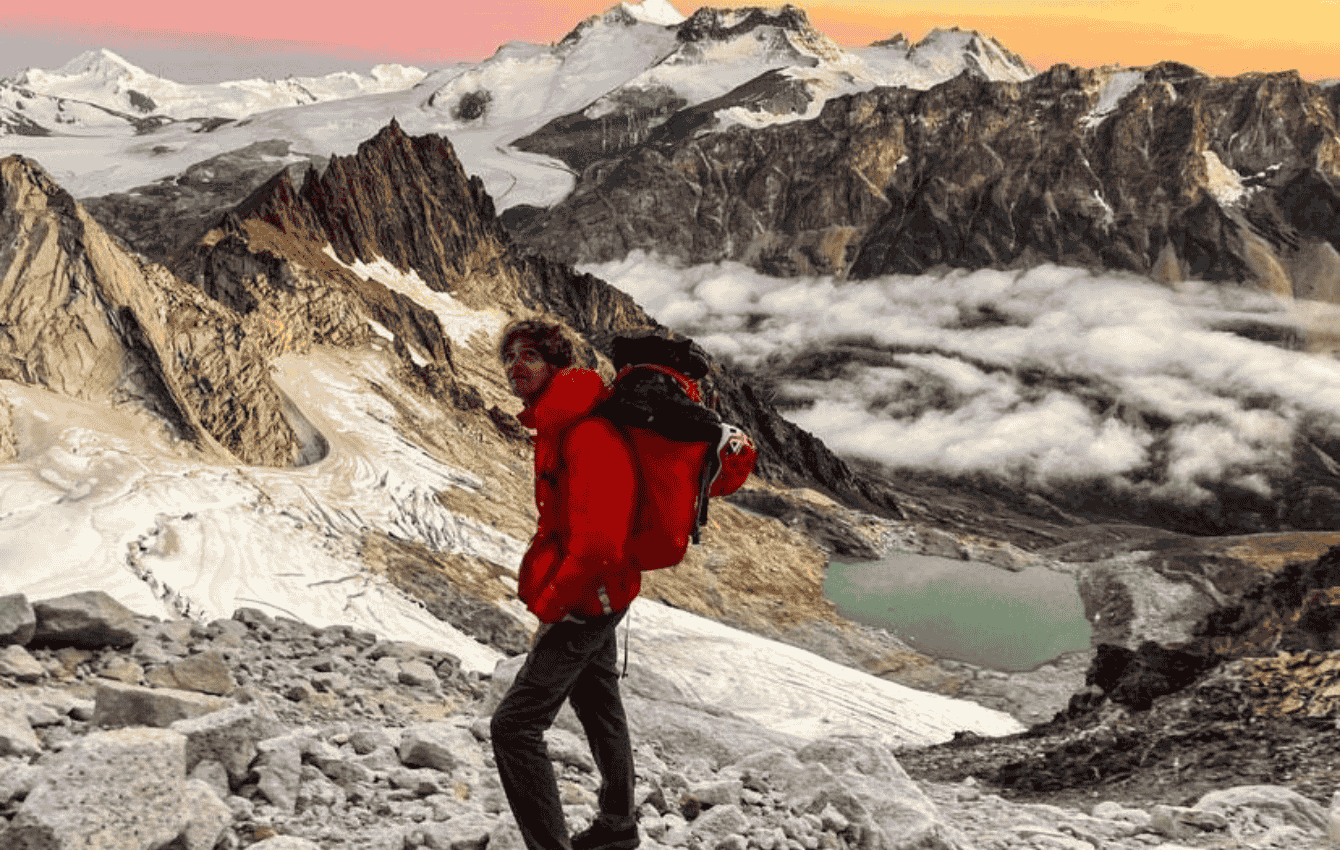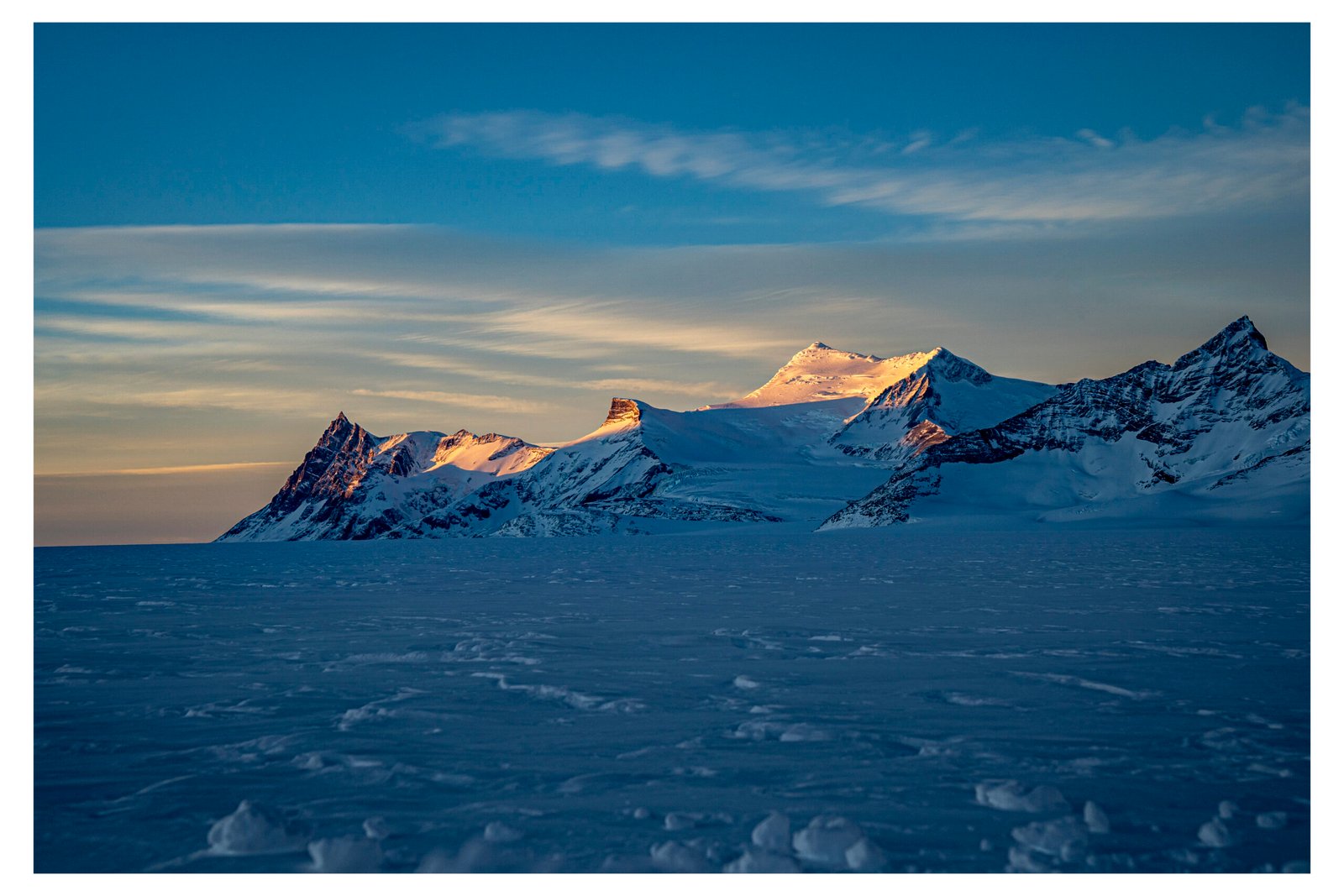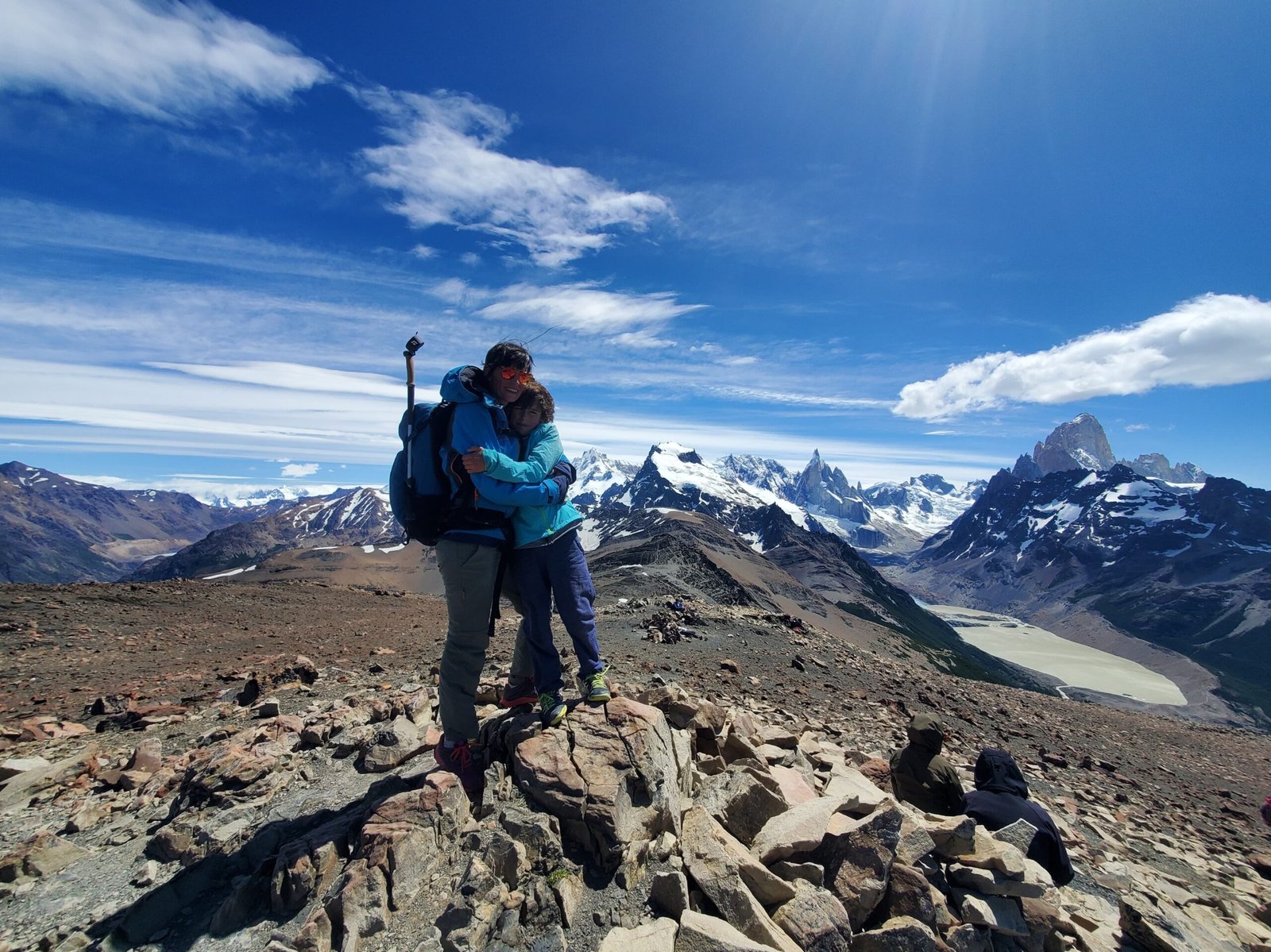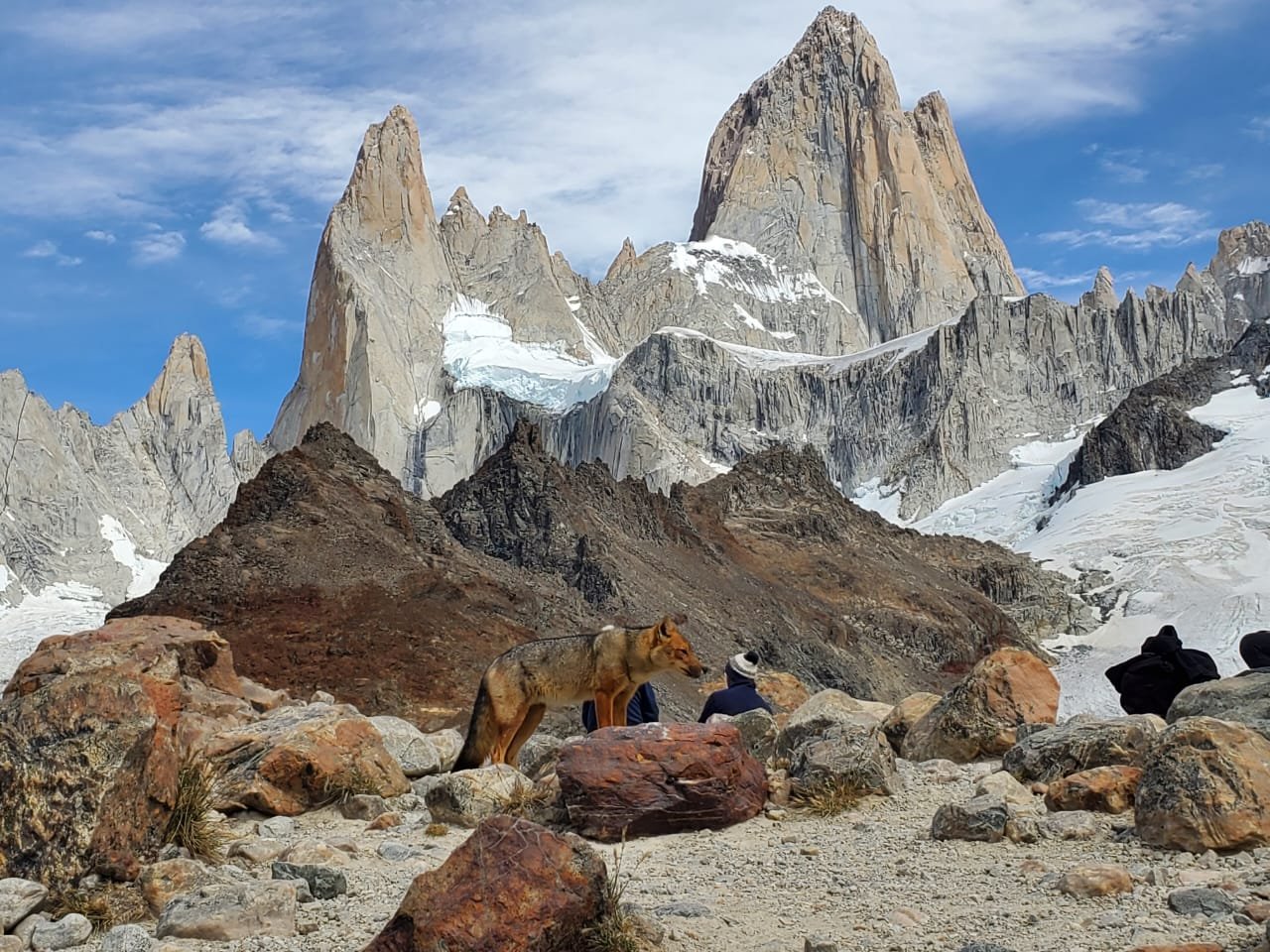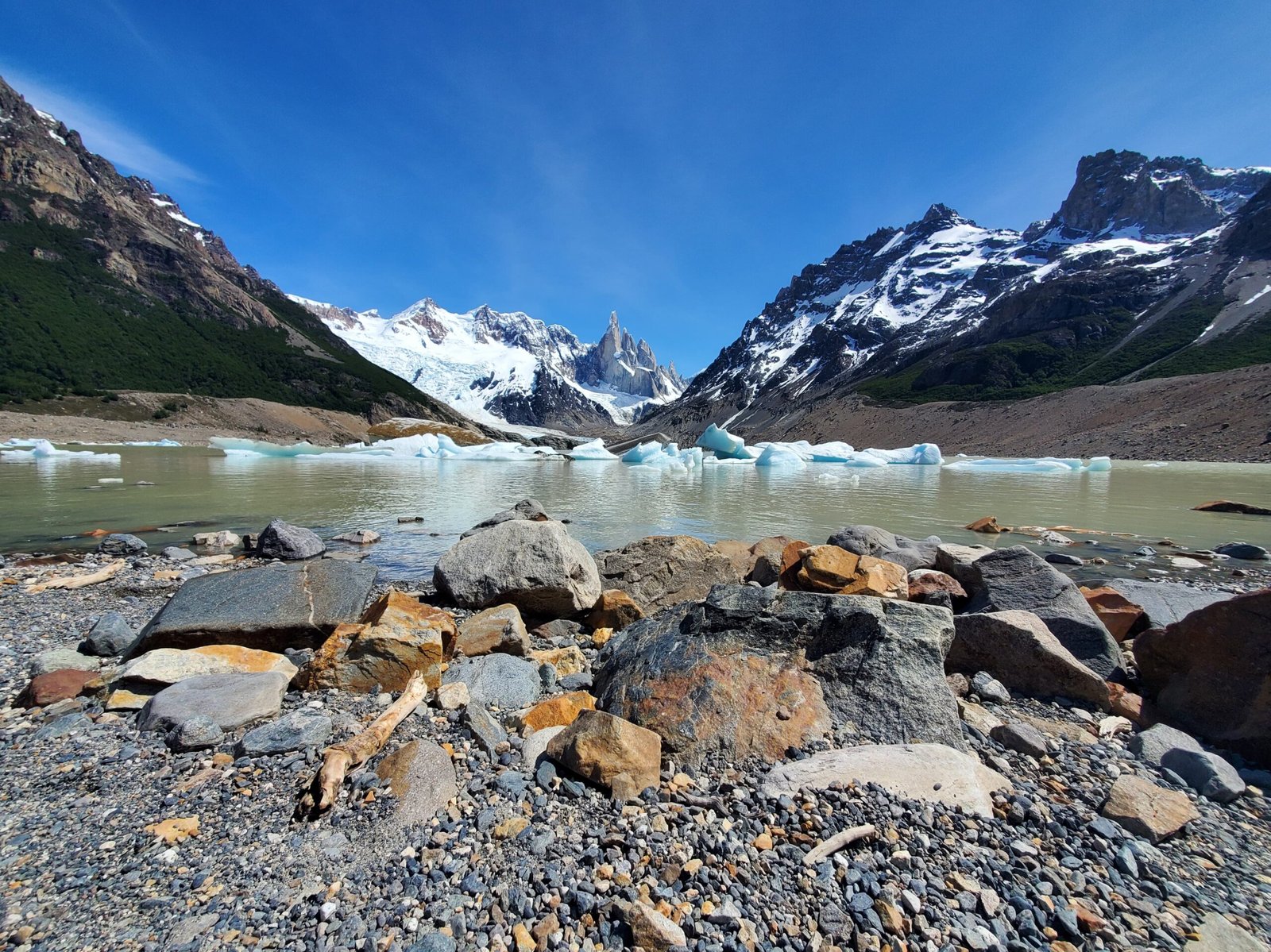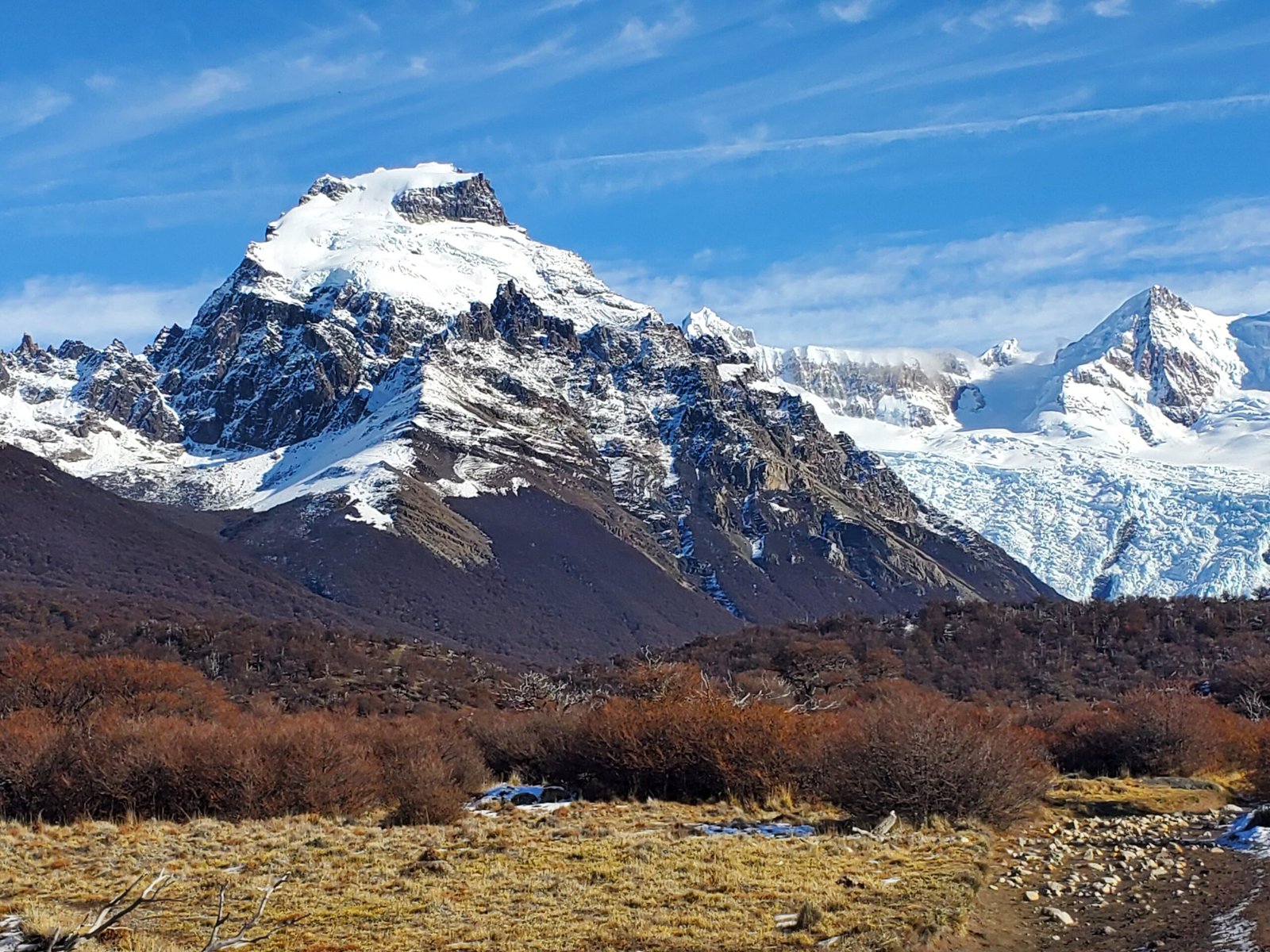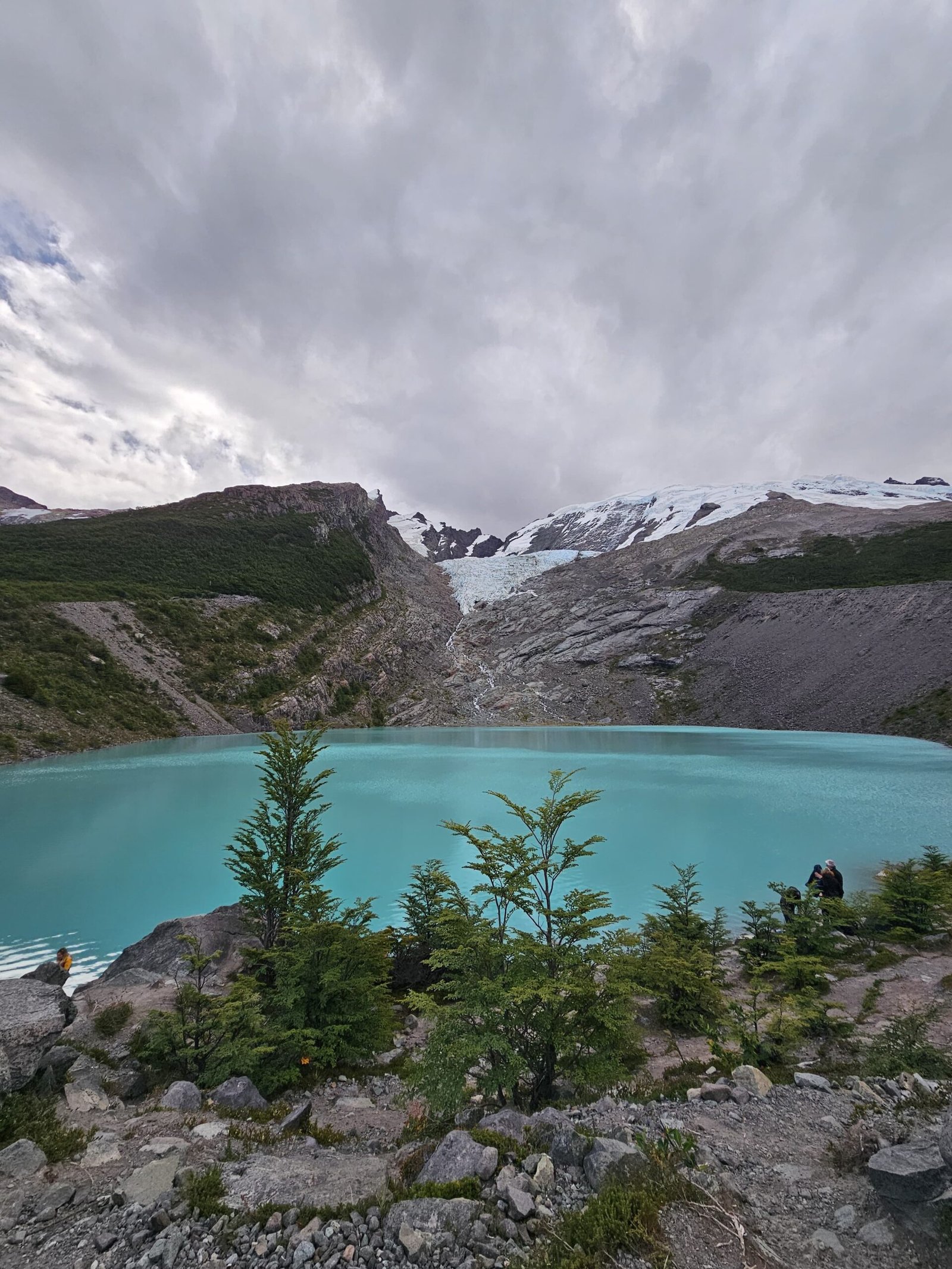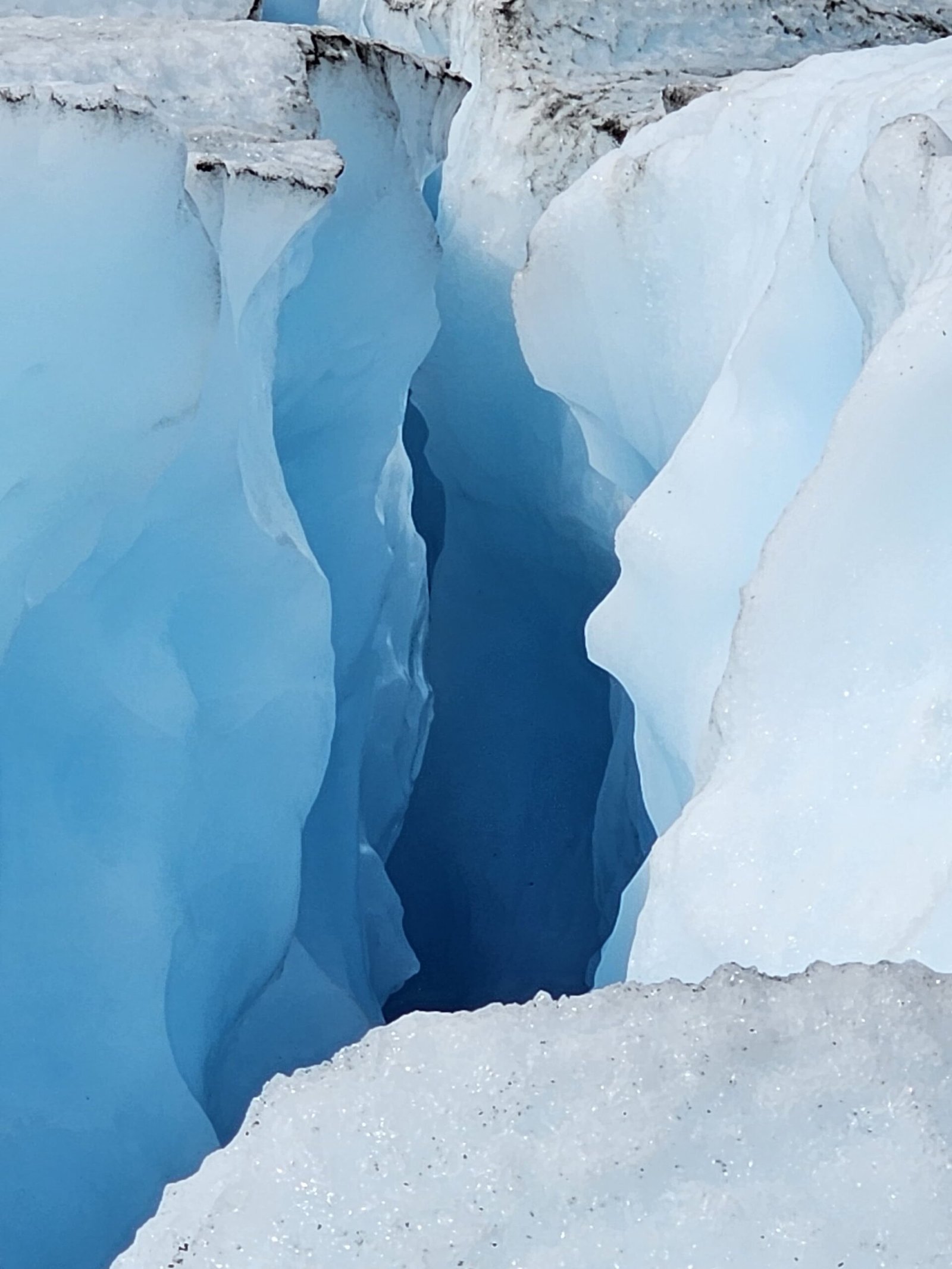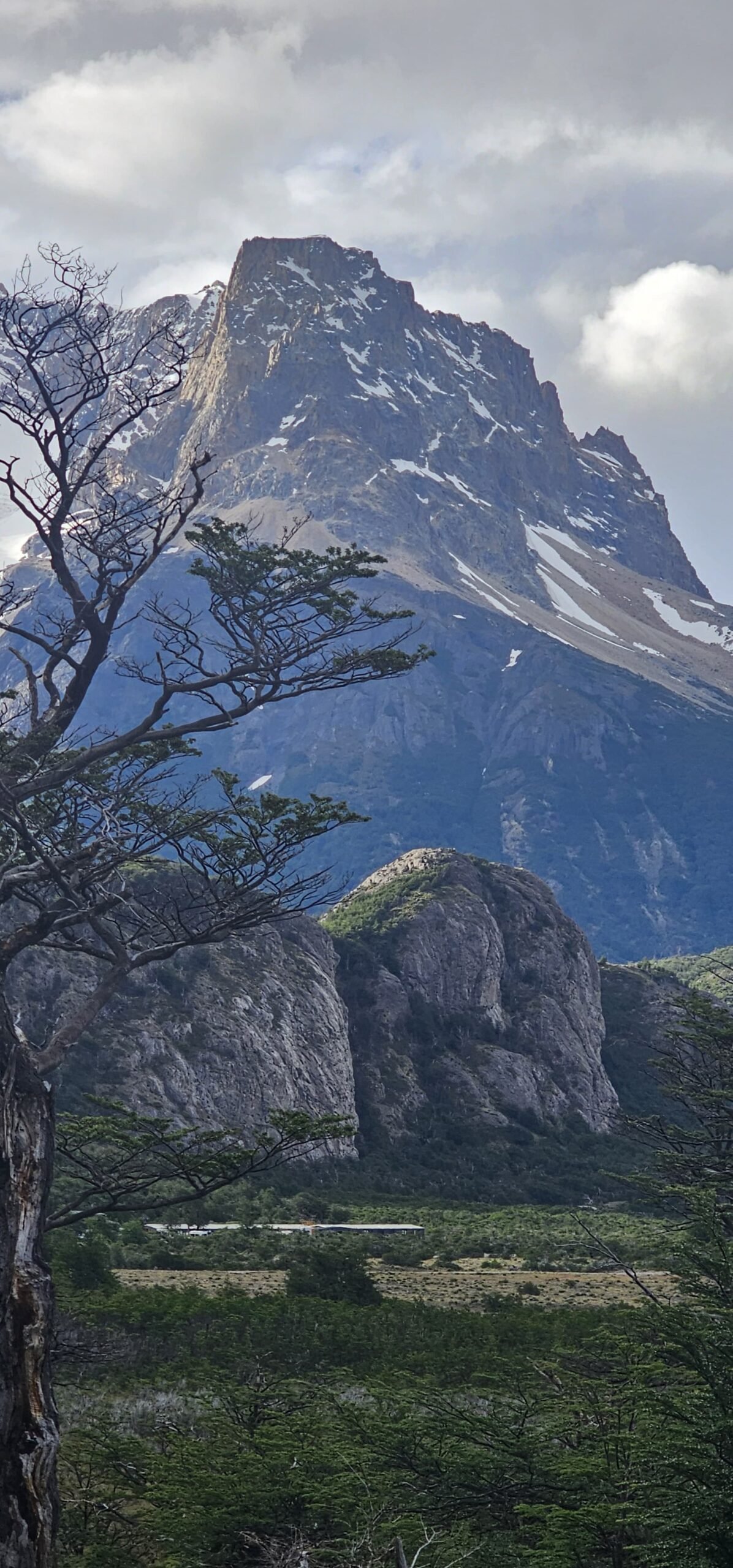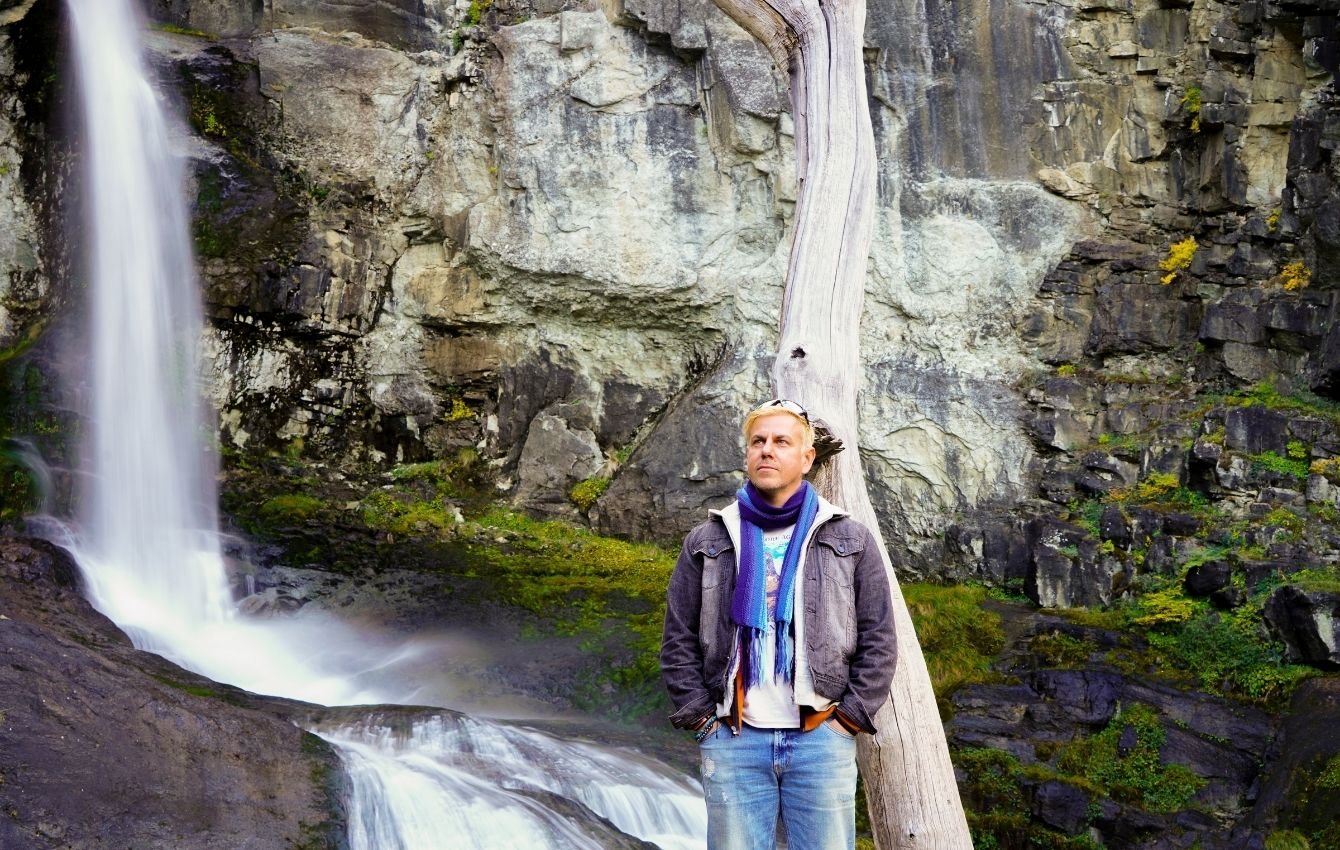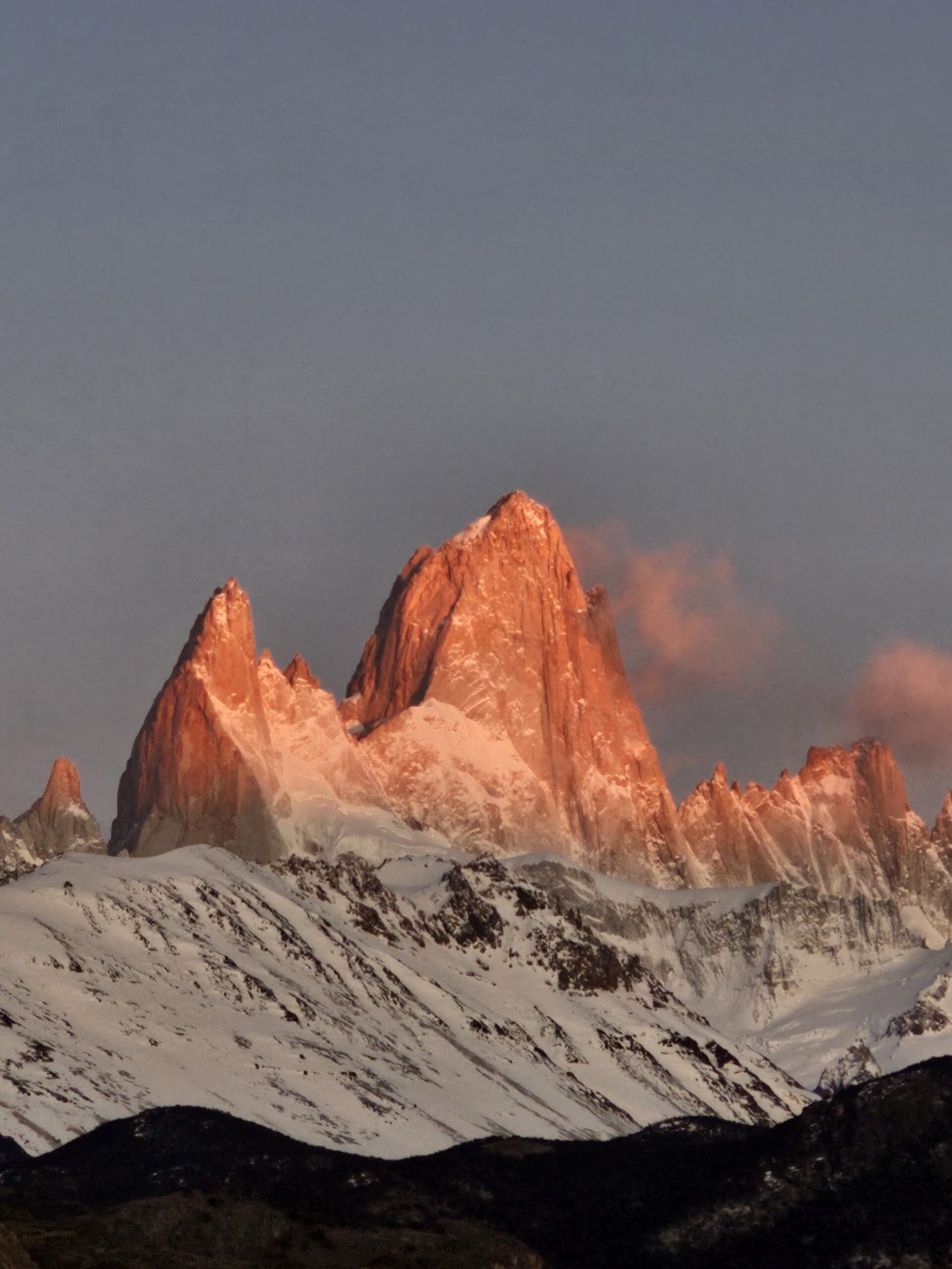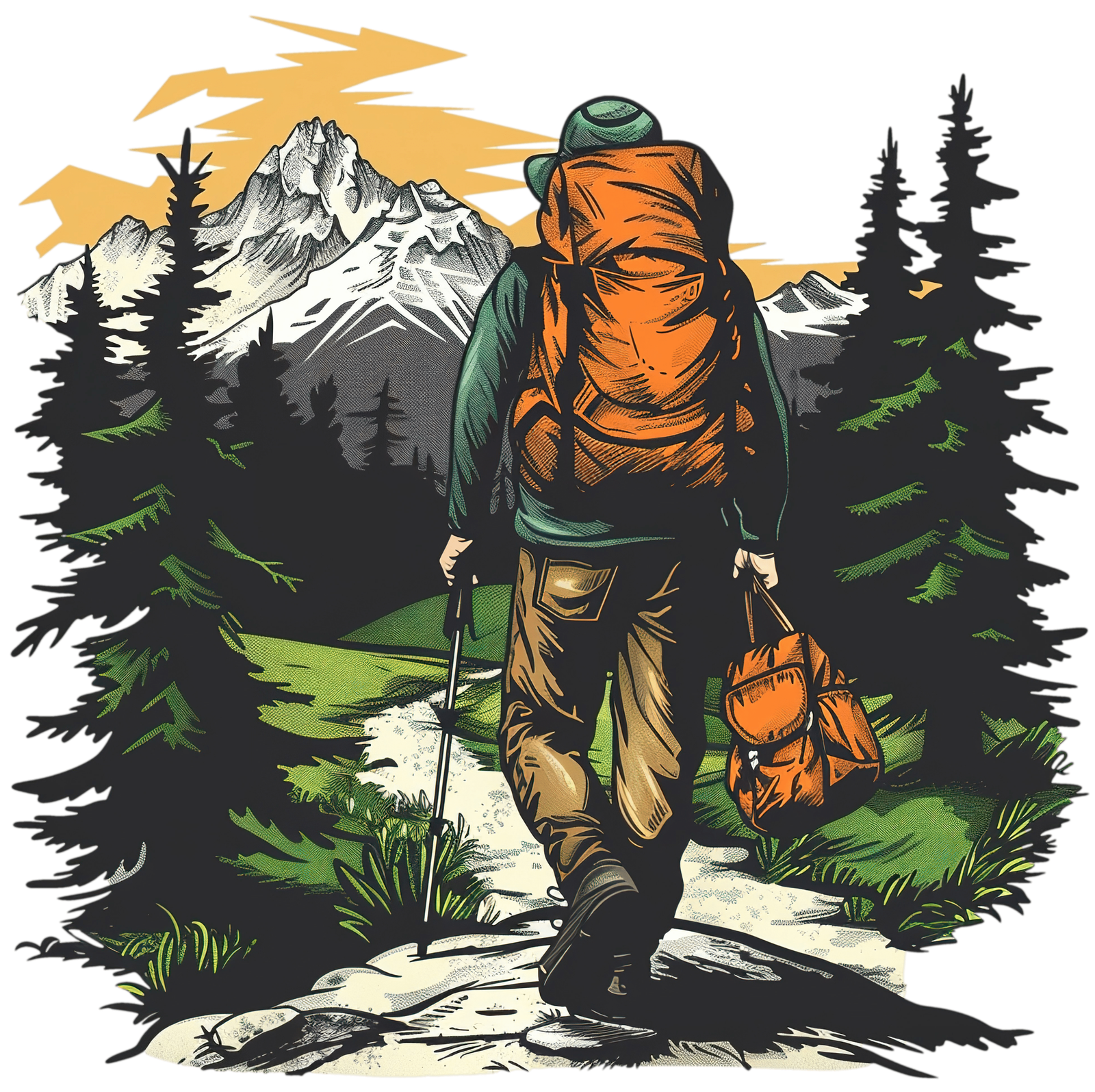Patagonia Hiking
Discover the best hiking trails in Patagonia, from world-famous treks like the Laguna de los Tres and Huemul Circuit to hidden paths that few visitors ever see. Patagonia hiking offers dramatic mountain landscapes, glaciers, turquoise lakes, and unique wildlife at every turn. Whether you’re planning a day hike in El Chaltén, a multi-day trek through Los Glaciares National Park, or an off-the-beaten-path adventure, this guide will help you prepare, choose the right route, and make the most of your journey through one of the most stunning hiking destinations in the world.
Explore Laguna de los Tres, Laguna Torre, and more with a local guide.
Discover Patagonia’s most iconic trails—Laguna de los Tres, Laguna torre, and more, on a guided trek with a certified local expert. Get insider knowledge, trail safety, and the best photo spots in El Chaltén.
Best Hiking Trails in Patagonia
Exploring Patagonia’s trails is one of the most unforgettable experiences on Earth. From iconic day hikes to challenging multi-day treks, Patagonia offers trails for every level of adventurer — and each one delivers jaw-dropping views of glaciers, peaks, and turquoise lakes.
Discover Patagonia’s Legendary Trails
Explore world-famous routes like Laguna de los Tres, Laguna Torre, and the Huemul Circuit, each offering unique perspectives of Fitz Roy, Cerro Torre, and the vast Southern Patagonian Ice Field.
Choose the Right Hike for You
Whether you want a quick day hike or a multi-day adventure, there’s a trail to match your skill level and schedule.
Experience Patagonia’s Seasons
Learn the best times of year to hike, from long summer days with clear skies to the moody beauty of shoulder-season treks.
Capture Stunning Photos
These trails are a photographer’s dream, offering sunrise views, starry skies, and wildlife encounters you won’t want to miss.
Plan with Confidence
Use this guide to prepare for weather, pack the right gear, and make the most of your Patagonia adventure.
Top day hikes in El Chalten, Patagonia
For hikers exploring Patagonia, the region’s day trails offer an accessible way to experience its world-famous landscapes. From turquoise lakes at the base of Fitz Roy to dramatic viewpoints over Cerro Torre, these routes deliver maximum reward without requiring overnight camping. With proper planning, you can cover some of the best trails in Patagonia in a single day and still have time to relax, enjoy the scenery, and capture stunning photos.
Laguna de los Tres
Patagonia’s most iconic day hike, offering jaw-dropping sunrise/sunset views of Fitz Roy after a challenging final climb. Laguna de los Tres is a classic and must do if in El Chalten.
Laguna Torre
A gentler trail leading to an amphitheater-like view of Cerro Torre and its glacier-fed lagoon.
Loma del Pliegue Tumbado
Less crowded than the classics, this demanding trek rewards hikers with sweeping panoramas of the entire Fitz Roy and Cerro Torre range.
Mirador de los Cóndores and Mirador de las Águilas
Shorter routes like Mirador de los Cóndores and Mirador de las Águilas are perfect for a half-day outing with incredible views.
Photography Highlights
Each of these trails provides opportunities to capture Patagonia’s raw beauty at sunrise, sunset, and even during changing weather.
Benefits of Hiring a Guide?
Hiring a guide turns a good trip into a great one. Beyond the obvious safety and security, guides offer a really nice experience. The guides attend monthly classes that help them provide a better experience. Many attend monthly Geology & glaciology of Patagonia courses, Wildlife of Patagonia courses and also Interpretive guiding & storytelling: techniques to connect facts for meaningful stories.
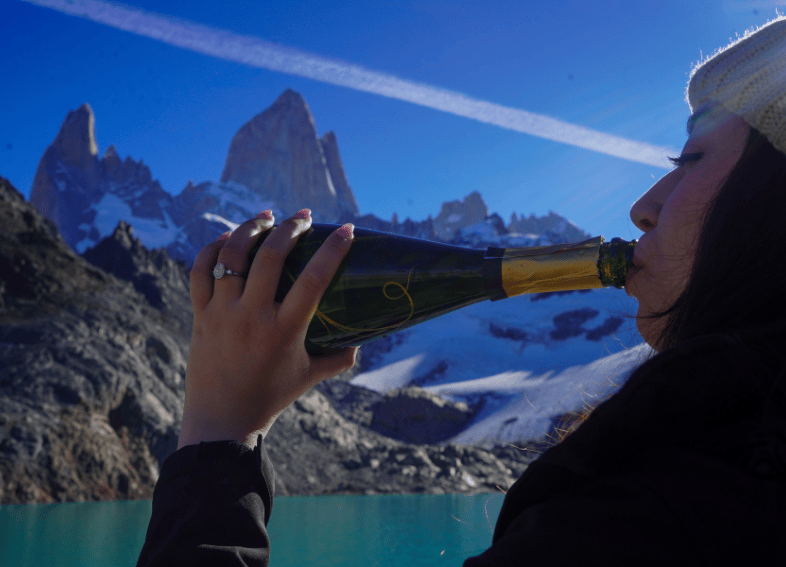
Mental Advantages
- Eliminate stress about navigation, pacing, and weather decisions.
- Enjoy peace of mind knowing logistics are handled by an experienced Guide.
- Embrace the adventure with freedom to be present as your guide anticipates challenges.
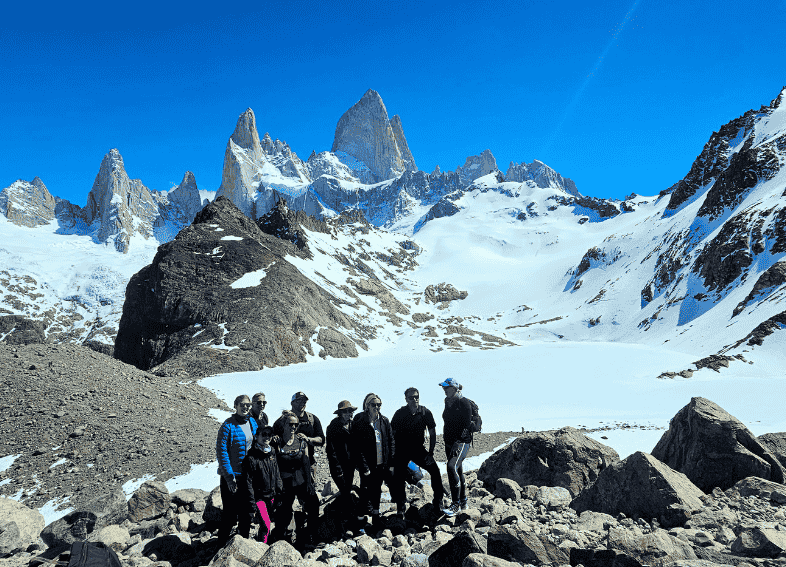
More Immersive Experience
- Support Local Experts & Enrich Your Trekking Experience.
- Enhance Safety & Conserve Energy for the Journey.
- Fully Immerse Yourself in Patagonia’s Beauty.
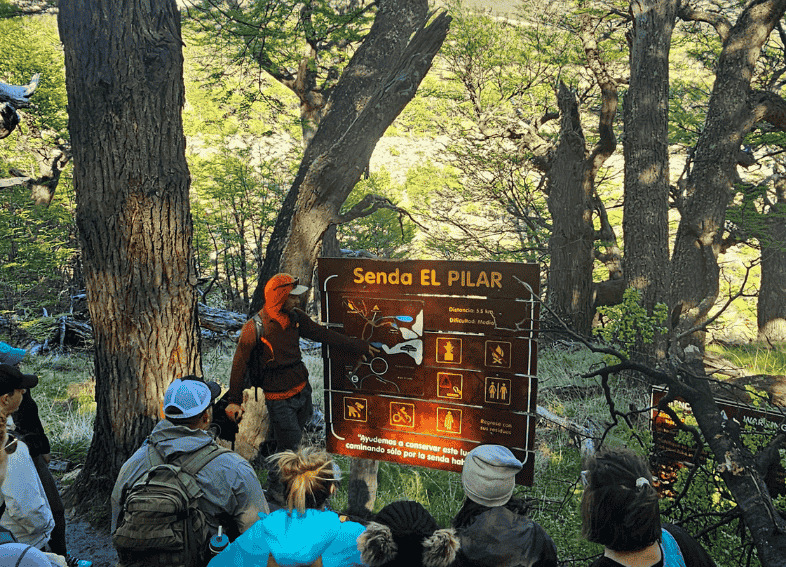
Physical Benefits of hiring a Guide
- Save energy with efficient pacing and smart route choices.
- Reduce strain and injury risk with technique tips (footing, poles, crossings).
- Better presence/flow: no map-checking every 5 minutes, just hike and soak it in.
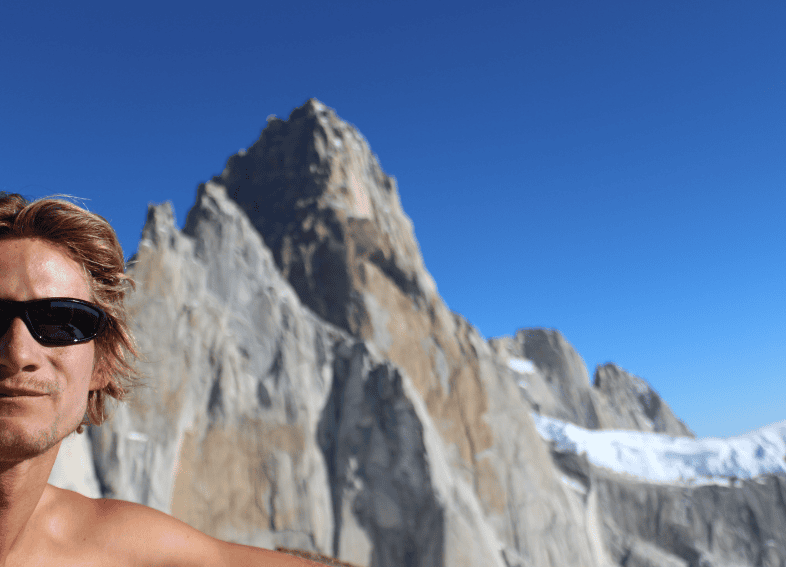
Customized Support
- Guides adapt to your specfic needs, from tending to blisters or setting a comfortable pace.
- Gain valuable information about the terrain and conditions from experts familiar with the region.
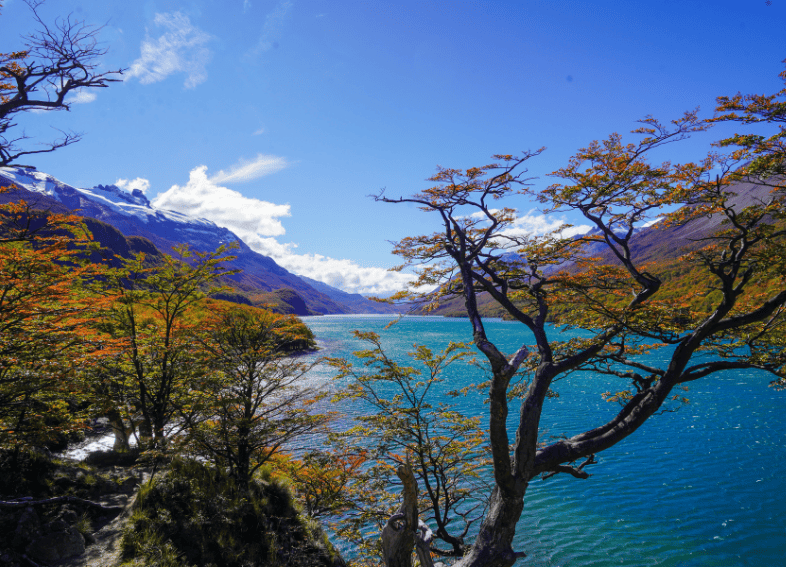
Enhanced Exploration
- Reach further and see more of Patagonia without the added strain.
- Discover hidden gems with insights from knowledgeable local guides.
- Optimize your adventure with a seamless and supportive experience.
Frequently Asked Questions About Patagonia Hiking.
Is hiking in Patagonia safe?
Short answer: Yes, if you’re prepared and choose routes suited to your experience. The biggest risks are rapid weather changes, strong winds, exposure, and long distances between services. In my 7 years of experience living in El Chalten, I can’t remember a time a client of a guide has been seriously Injured.
What are the best hiking trails in Patagonia?
El Chaltén (Argentina)
Laguna de los Tres (Fitz Roy) – Full-day, strenuous; classic sunrise views of Fitz Roy.
Laguna Torre – Full-day, moderate; glacier lake and Cerro Torre spire.
Loma del Pliegue Tumbado – Full-day, strenuous; panoramic ridge over both valleys.
Huemul Circuit (4 days) – Demanding; passes, ice views, Tyrolean crossings—experienced parties/guide recommended.
Torres del Paine (Chile)
Mirador Las Torres – Day, steep; iconic granite towers.
French Valley / Británico – Day (from W), moderate-strenuous; hanging glaciers and rock walls.
W Trek (4–5 days) – The essentials: Torres, French Valley, Grey Glacier.
O Circuit (7–9 days) – Full park loop; remote, wind-exposed, advance bookings required.
Bariloche / Nahuel Huapi (Argentina)
Refugio Frey – Day, moderate; spires and alpine lake.
Catedral → Jakob Traverse (2 days) – Strenuous; classic hut-to-hut feel.
Cerro Tronador area – Long day/moderate; glacier and valley vistas.
Ushuaia / Tierra del Fuego (Argentina)
Laguna Esmeralda – Half-day, easy-moderate; emerald lagoon.
Cerro Guanaco – Day, strenuous; Beagle Channel + Andes views.
Senda Costera – Day, easy-moderate; coastal forest in the national park.
Aysén / Carretera Austral (Chile)
Cerro Castillo Trek (3–4 days) – Demanding; jagged peaks, turquoise lakes.
Queulat Hanging Glacier – Short day/easy; dramatic suspended ice.
Good to know: Prime season is Oct–Apr; winds can be severe year-round. Reserve campsites early for Torres del Paine. For remote or technical routes (e.g., Huemul, shoulder/winter conditions), consider a local guide and always check ranger updates before you go.
Is el Chalten in Patagonia?
Yes. El Chaltén is a small town in Southern Patagonia, Argentina, inside Los Glaciares National Park (Santa Cruz Province). It’s the region’s trekking hub for Fitz Roy (Cerro Chaltén) and Cerro Torre, about 215 km (~3 hours) north of El Calafate and close to the Chilean border.
What to wear hiking in Patagonia?
Short answer: Dress in layers, prioritize wind/rain protection, and avoid cotton.
Core layers
Base layer: Synthetic or merino top (long/short sleeve depending on temp).
Mid layer: Fleece or light insulated jacket (synthetic or down).
Shell: Waterproof/windproof jacket (2.5–3L; taped seams, good hood); lightweight rain pants.
Bottoms: Quick-dry hiking pants or leggings; add thermal tights in cold/windy conditions.
Footwear
Shoes/boots: Sturdy, broken-in hikers with good tread (wet roots/rock).
Socks: Merino or synthetic; consider liner socks to prevent blisters.
Optional: Gaiters for mud/snow; microspikes in winter/early spring if icy.
Accessories (don’t skip)
Brimmed cap + warm hat (wind steals heat fast).
Gloves (light liner + wind/waterproof shell if cold).
Sunglasses (category 3–4 if near snow/ice); high-SPF sunscreen & lip balm.
Buff/neck gaiter for wind and sun.
Trekking poles (windy descents), small first-aid, space blanket.
Seasonal tweaks (Southern Hemisphere)
Summer (Dec–Feb): Light base, breathable mid, full shell for wind; sun gear is critical.
Autumn (Mar–May): Warmer mid layer; pack thin insulated pants/gloves.
Winter (Jun–Aug): Heavy mid + insulated jacket; thermal base on legs; microspikes/gaiters.
Spring (Sep–Nov): Unstable—bring full rain kit and warm layers even on “nice” days.
Key tips
Layer early: Add/remove before you sweat or chill.
Waterproof ≠ breathable: Vent (pit zips, front zip) during climbs.
No cotton: Stays wet, increases chill risk.
Where is Patagonia?
Patagonia is the southernmost region of South America, shared by Argentina and Chile. It runs roughly from the Lakes District (~40°S) down to Tierra del Fuego (~55°S), bounded by the Andes to the west and the Atlantic to the east. Gateways include El Chaltén/El Calafate, Bariloche (Argentina) and Puerto Natales/Punta Arenas (Chile), home to Los Glaciares and Torres del Paine.
How many days in El Chaltén?
3–4 full days. That gives you time for the two classics and a weather buffer. 4–5 days is ideal for photographers. 1–5 days Months if you’re a professional climber.
Is Patagonia safe?
Yes, Patagonia is generally very safe for travelers. Most issues aren’t crime but weather, wind, distance, and logistics.
What to know
Cities & towns: Low violent crime; use normal precautions (watch bags at bus stations/ATMs, don’t leave gear in cars).
Trails: Main routes are well marked; biggest risks are strong winds, cold rain/snow, river crossings, and long distances between help. If Snow begins the trail can become difficult to follow.
Driving: Expect high winds, gravel, wildlife on roads, and long gaps between fuel, plan your stops.
Health & water: Tap water is usually safe in towns; treat backcountry water. Carry layers, first aid, and extra food.
Guides: A local guide improves safety calls (weather, timing) and makes the experience richer.
Insurance & contacts: Carry travel insurance and offline maps. Argentina emergencies: 911/107 (medical). Chile: 133 (police) / 131 (ambulance).
How do you use hiking poles?
Set length: Elbow near 90° on flats; –5–10 cm uphill, +5–10 cm downhill.
Straps: Hand up through loop, then grip—let the strap carry weight.
Technique: Opposite-foot planting on flats; plant slightly behind uphill to push, slightly ahead downhill to brake.
Crossings & wind: Two poles down for streams; short, firm plants in strong wind.
Avoid mistakes: Don’t overreach poles in front; no death grip; adjust for side-hills.
Care: Tighten locks; use baskets in mud/snow, rubber tips on rock/boards.
Is hiring a porter common in Patagonia?
Yes, many travelers in Patagonia, especially around El Chaltén, hire porters to enhance their experience and make challenging trails more manageable. Hiring a porter is a smart choice for those aiming to explore multiple trails or take on more challenging terrain.

